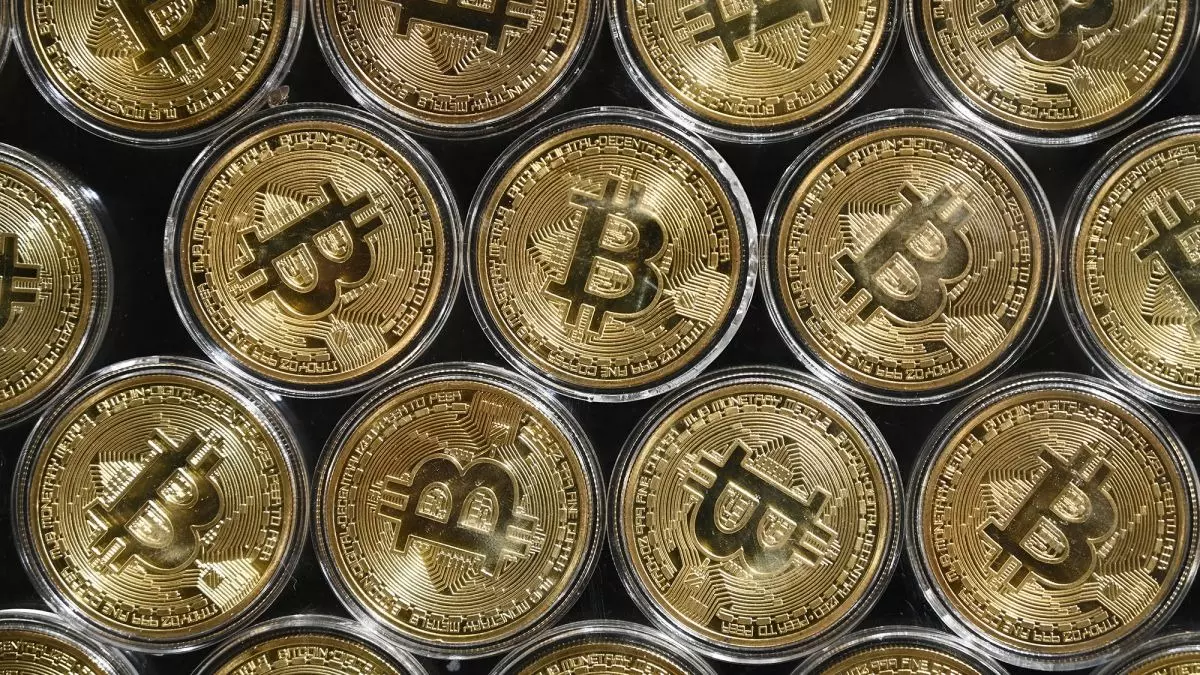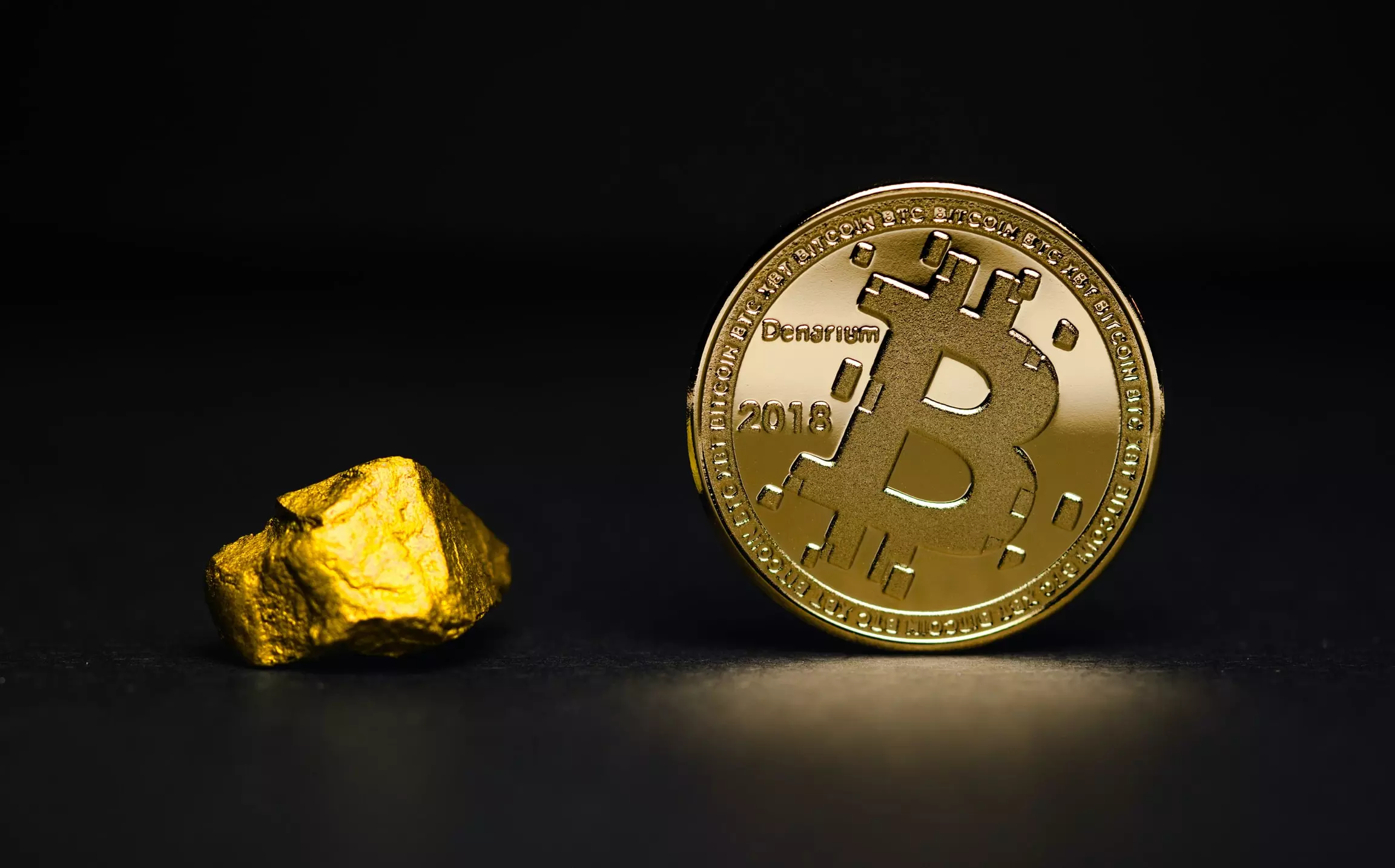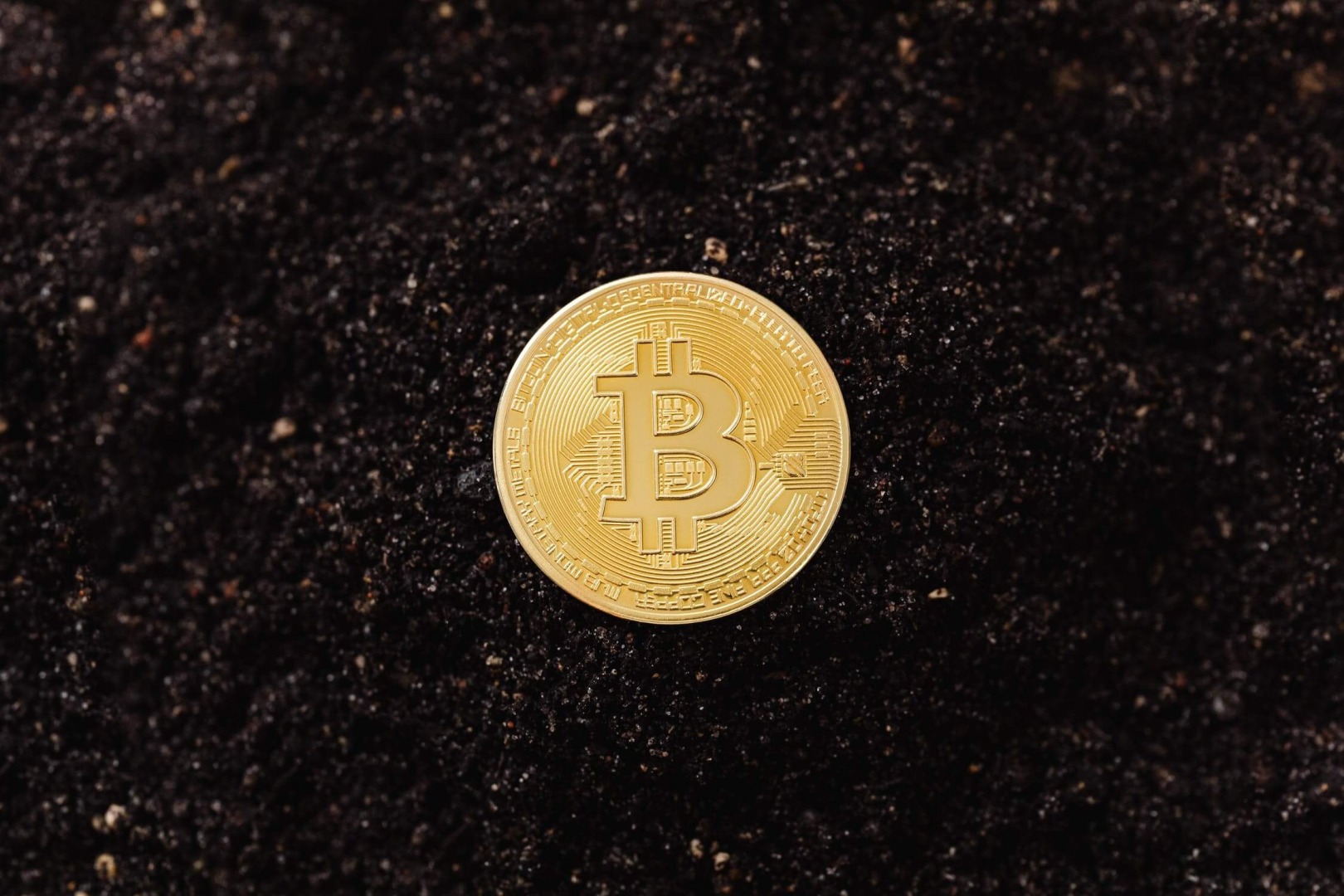Since the U.S. abandoned the gold standard, the value of a currency is what it represents, not what it’s backed by, digital or otherwise.
MaTun rubbed his beard between his fingers and surveyed his substantial property in a lush green suburb of the ancient Chinese city of Luoyang.
The 17th century merchant and trader, Ma had made his fortune plying the lucrative trade between the port city of Shanghai and the eastern end of the Silk Road of Xi’an.
Yet trade and industry in 17th century China was anything but straightforward, with imperial palms needing to be greased and greedy officials always looking for more than their pound of flesh.
So when a particularly greedy Qing dynasty official inspected Ma’s substantial storehouse of grain, to determine how much he should be getting from this month’s taking, Ma had had enough.
Years earlier, Ma had received an official jade tablet from a high Qing official, but had refrained from using it, for fear of being seen to have abused that official’s authority.
So when the greedy Qing official was looking to take a bite out of Ma’s storehouse of grain for the umpteenth time, Ma reached into his pockets and brought out the jade tablet, at which point the Qing official fell to his knees.
But a jade tablet was really nothing more than that — a piece of jade, no more sinister than any piece of jewelry.
Yet the corrupt Qing official was not fearful of the jade tablet itself, but rather what it symbolized, that Ma had a relationship and the sanction of someone much higher than himself.
Money as Symbolic

Throughout history, symbols have come to define the human condition.
We swear by our symbols, we bleed for them, and in some cases, we even die for them.
Whether it’s the flag or for the cross, the colors we wear or the right to wear colors, symbols hold sway over us in ways that aren’t always immediately obvious.
Which is where the dollar comes in.
As the world’s reserve currency, many academic treatises have attempted to dissect where the value of the dollar truly lies.
Although the U.S. is home to just 4.25% of the world’s population, the dollar makes up over 60% of the world’s global foreign exchange reserves, and in the world’s foreign exchange markets, around 90% involves the dollar.
Yet despite concerns that the U.S. has trillions of dollars in foreign debt and continues large deficit spending, the greenback still holds trust and confidence in its ability to pay its obligations, much to the consternation of rival nations, and to the bewilderment of those who predict the dollar’s demise.
The issue with predicting the demise of the dollar is that it presupposes that the value of a currency lies in the value of a country’s economy, but it’s so much more than that.
Bearing in mind that ever since the U.S. abandoned the Bretton Woods system, where a dollar was backed by its equivalent in gold, the economic anchor by which a dollar’s value was measured has long been untethered.
If a dollar was only as good as the gold that was behind it, then hyperinflation of the style of Zimbabwe or Argentina, should already have occurred in these United States, but it hasn’t.
And that’s why to understand the value of any currency, it’s first necessary to understand what it represents ideologically, more so than what it represents economically.
Which brings us to China’s digital yuan.
Chinese Cryptocurrency
There are some in Washington who believe that Beijing’s digital yuan could pose a serious challenge to dollar dominance.
To be sure, although China is the world’s second largest economy, the Chinese yuan only makes up a paltry 2% of the world’s foreign currency reserves.
Part of the reason of course is by design.
Fearful that newly monied Chinese will spirit away capital from the Middle Kingdom, the Chinese yuan is not a fully convertible currency, limiting its appeal as a global reserve currency.
And while China leads the world in electronic payments, thanks to the vision of Alibaba and Tencent, in building out Alipay and WeChat Pay, it also leads the world in capital controls, having also built a formidable financial wall for its citizens.
So why then is Beijing so nervous when it comes to cryptocurrencies, in particular Bitcoin, if its true goal is to wrestle dollar dominance in international finance away from Washington?
Why go through all the trouble of almost all but banning cryptocurrencies, while simultaneously creating your own?
Why not make the yuan fully convertible and compete with the dollar on the global stage?
A fascinating article written in February by former People’s Bank of China governor Xiaochuan Zhou is revealing.
In that article, Zhou explains the fundamentally defensive character of the digital yuan,
Blockchain technology features decentralization, but decentralization is not a necessity for modernizing the payments system. It even has some drawbacks.
So Beijing was all about the block, to economically chain its citizens, just not in the decentralized hands of Bitcoin.
Last year, the People’s Bank of China (“PBoC”)seized the opportunity presented by the pandemic to rush its digital yuan into the hands of the Chinese, launching trials of its digital currency in three major cities, Shenzhen, Suzhou and Chengdu.
But lest you think that the digital yuan was intended to supplant China’s existing financial system, Beijing made it clear that the digital yuan would run on a two-tier system.
On one level, the PBoC will continue to deal with existing state-owned commercial banks and other entities, including telecom and tech firms, issuing digital yuan to them.
While the PBoC controls the digital yuan, electronic payment services such as Alipay and WeChat Pay, alongside legacy banks, continue to serve as intermediaries to consumers and businesses.
To borrow a Chinese proverb, it is to shoot two hawks with one arrow.
Beijing not only defends the Chinese Communist Party against cryptocurrencies, it also reigns in the enormous power of its big tech companies, all while ensuring that it has the power to surveil its citizens’ transactions.
And that is the primary purpose of the digital yuan, that it gives the dollar a run for its money overseas is a byproduct.
A Yuan For Everything
It’s no secret that Washington has overwhelming influence over the allegedly neutral and Belgium-based (for good measure) Society for Worldwide Interbank Financial Telecommunication or SWIFT.
SWIFT, is like the money super highway, and Washington’s significant influence over it is what makes U.S. financial sanctions so effective and punishing to enemies of the United States.
Which is why the Chinese (and Russians, and every other country which has suffered the sting of U.S. sanctions) have been actively exploring ways to challenge dollar dominance for years.
One of which of course has been using China’s digital yuan, through initiatives such as the Multiple CBDC Bridge project by the Hong Kong Monetary Authority and Bank of Thailand, to implement a cross border payments system based on distributed ledgers.
Beijing’s goal isn’t so much to replace the dollar, but to create a financial system parallel to it, that serves those whose ideals and ideologies are not necessarily in line with America’s.
It isn’t that China’s digital currency is going to become the dominant standard of payments, it’s that it could be one standard, creating a rival system that operates alongside the American-led financial world order and offer an alternative to those who are not ideologically aligned with America.
And therein lies the bigger worry.
It’s easy to view currency in purely economic terms — as a unit of account, a store of value, and a medium of exchange.
But bear in mind that all of these qualities that we place on currency, all have ideological overhangs.
It assumes that we agree what a unit is, what value means and what we’re willing to give up in exchange for a unit of currency.
Viewed from the lens of ideology, it’s why the dollar won’t disappear easily.
Yes, America is profligate, but the dollar is so much more than debt.
For the millions who are oppressed around the world, the dollar is a symbol of economic freedom, it represents a set of values and ideals, a yearning for a betterment of economic self.
A quote wrongly attributed to U.S. President Abraham Lincoln, but nonetheless relevant reads,
America will never be destroyed from the outside. If we lose our freedoms it will be because we have destroyed ourselves from within.
It won’t be the digital yuan that spells the demise of the dollar, it will be Americans’ own loss of faith in the greenback that will be its undoing.
Which is why Bitcoin is at a pivotal moment — it harkens back to a time when the dollar was backed by gold and the concept of currency was anchored in something that was certain.
Bully for Bitcoin

Unless you’ve been living under a rock, chances are you’ve heard about Bitcoin by now.
But for the multitude who haven’t read the 8-page-long Bitcoin whitepaper (you really should, and the ninth page is just references), Bitcoin was positioned to be a “purely peer-to-peer version of electronic cash” that allows “online payments to be sent directly from one party to another without going through a financial institution.”
In a nutshell, Bitcoin is a public ledger that is simultaneously updated and shared by a network of computers that also serve to secure its blockchain.
To “pay” someone using Bitcoin, you simply send a signed message transferring ownership to a receiver’s public address (key) and transactions are grouped together and added to the ledger in blocks (hence the use of the term “blockchain”) and every node in the network (those computers mentioned earlier) has an entire copy of this ledger (blockchain) at all times.
A node (computer) can add a block to the chain (and receive a Bitcoin reward) only by solving a complex cryptographic puzzle chosen by the Bitcoin protocol, which consumes processing power in the process.
Nodes that solve these cryptographic puzzles — also known as “miners” — are then rewarded not only with transaction fees, but also with more Bitcoins, known as the “mining reward.”
This mining reward will get cut in half every four years (on average) until the total number of Bitcoins reaches 21 million, after which no new Bitcoins will ever be created.
So now that you’re up to speed on what Bitcoin is, it’s time to consider what Bitcoin represents.
A large part of the reason for Bitcoin’s success is that Bitcoin in and of itself is sovereign — no one controls it.
Sure there are Bitcoin “whales” who own plenty of Bitcoin, and miners who mine it, but no single entity rules it.
Above all, Bitcoin is smart.
With every day that Bitcoin continues to work — not being hacked, not crashing — the predictions that Bitcoin will one day end up worthless (that means you Nouriel Roubini) appear more and more hollow.
And the pressure on people to affirm their own smartness by owning Bitcoins grows stronger.
While Bitcoin may have first caught on with the tech fringe, it’s come full circle with tech veterans, including Elon Musk, originally on the fringe himself with PayPal.
Over the past year, tech companies like Square, PayPal, MicroStrategy and Tesla have all piled into Bitcoin.
And from legacy tech, legacy investors, including Paul Tudor Jones, Stanley Druckenmiller and Bill Miller were also bitten by the Bitcoin bug.
Perhaps even more significantly, Bitcoin came to be treated like a legitimate part of the financial system — one of the oldest banks in the United States, Bank of New York Mellon, now handles Bitcoin, and so does Visa and Mastercard.
There are well-functioning futures and options markets for Bitcoin and “XBT” the symbol for Bitcoin, appears on Bloomberg terminals across the globe.
And as Bitcoin has grown more respectable, the early cryptocurrency adopters have already moved on to decentralized finance, or DeFi, an open, permissionless and highly interoperable protocol stack built on public smart contract platforms, chief among which is the Ethereum blockchain.
Like Bitcoin, DeFi has no centralized “trusted third party” intermediaries for verification and regulation of the system.
A much looser, more variegated system, with multiple coins, tokens, exchanges, debt markets, derivatives and asset management protocols, DeFi has the potential to create an entirely parallel financial system.
But don’t take my word for it, look at what Fabian Schär writing for the U.S. Federal Reserve Bank of St. Louis notes,
This architecture can create an immutable and highly interoperable financial system with unprecedented transparency, equal access rights, and little need for custodians, central clearing houses, or escrow services, as most of these roles can be assumed by ‘smart contracts.’
Atomic swaps, autonomous liquidity pools, decentralized stablecoins, and flash loans are just a few of many examples that show the great potential of this ecosystem.
DeFi may lead to a paradigm shift in the financial industry and potentially contribute toward a more robust, open, and transparent financial infrastructure.
If the dollar represents an imperfect symbol of democracy, then decentralization, whether via Bitcoin or some other cryptocurrency, may be its actualization.
Because the dollar represents an American brand of democracy, warts and all, it risks limiting itself to carving up the world along Cold War-era battle lines — “them” the iron curtain of totalitarianism, and “us” — democracy.
Or at least that seems to be how the Biden administration is approaching the challenge of the digital yuan.
Given Biden’s advanced age, it comes as little surprise that his administration believes in Keynesian (Google it) demand management and stimulus.
In a nutshell, economist John Maynard Keynes had theorized that during the Great Depression of the 1930s, government spending had to take the place of a drop in private consumption, to keep the economy going.
Fast forward to our present era, and the Biden administration has ushered in an unprecedented period of fiscal and monetary expansion, that while triggered by a public health emergency, is now being used as cover for a prolonged use of such policy tools.
Meanwhile in foreign policy, Biden and his colleagues seem committed to maintain a Cold War stance against China, undermining the enduring credibility of the U.S. dollar as the preeminent global reserve currency and undermining the value of U.S. Treasuries as the world’s safest financial assets.
Yet it is precisely these power structures of America that are being threatened by the rise of an alternative financial system, that essentially bypasses the Federal Reserve and potentially, the U.S. Treasury system altogether.
And that’s what the digital yuan is genuinely targeting — decentralization, not the dollar.
When the Chinese first came across Bitcoin, they understood its value almost instantly, and in a way that would take Americans years more to fully grasp.
For millions of Chinese involved with cryptocurrencies, these nascent digital assets represented portable economic power, free from fear or favor from Beijing — economic democracy, where political democracy did not exist.
And that’s why Beijing needed to rush out its own digital currency — because it assumes that ease of use, as opposed to ideology is what drives the economic human.
While the messy and chaotic democracy of America may not be what every citizen on earth aspires to, the economic democracy of self, surely is.
If we accept that as human beings, all of us yearn to be free, then the dollar is the beta version of that aspiration, cryptocurrencies may be the evolution of that.
Instead of attempting to issue a digital dollar, Washington should look to embrace Bitcoin and cryptocurrencies, because decentralization is what will ultimately allow America to dominate, not the dollar.
America’s power lies not in its system of centralization, but in its system of decentralization — it’s why the federal system endures, despite so many challenges to its structure.
Putting power in the hands of the many, as opposed to the few, was the very raison d’être of the founding of the United States of America, also perhaps a reluctance to pay taxes to the crown, but I digress.
In 2017, the Chinese Communist Party restricted the ability of its citizens to buy Bitcoin, and by the looks of things, is set to continue clamping down on cryptocurrencies.
That should be the biggest clue as to what Beijing’s true target is — Bitcoin first, the dollar, maybe next.





Leave your comments
Post comment as a guest